
Freycinet National Park: Australia's Coastal Gem
Explore Freycinet National Park, Tasmania's coastal treasure, known for its stunning Wineglass Bay, diverse wildlife, and scenic hiking trails.
Freycinet National Park, located on the east coast of Tasmania, is a haven for nature lovers and adventurers. The park is home to stunning landscapes, including the iconic Wineglass Bay, known for its perfect crescent shape and crystal-clear waters. The park's rugged coastline, granite peaks, and secluded beaches offer a multitude of photo opportunities and outdoor activities. For those who enjoy hiking, Freycinet National Park boasts several trails ranging from easy walks to challenging climbs. The Wineglass Bay Lookout is a must-visit, providing breathtaking views of the bay and the surrounding wilderness. More experienced hikers can take on the full Wineglass Bay and Hazards Beach Circuit, which offers a full day of exploration through diverse terrains. Wildlife enthusiasts will find plenty to marvel at in Freycinet. The park is home to a variety of native animals, including wallabies, wombats, and an array of bird species. The coastal waters are also rich in marine life, making it a great spot for snorkeling and diving. Whether you're looking to relax on a pristine beach, embark on a scenic hike, or explore the rich biodiversity, Freycinet National Park offers an unforgettable experience. The park's natural beauty and tranquility make it a perfect escape from the hustle and bustle of everyday life.
Local tips in Freycinet National Park
- Visit early in the morning or late afternoon to avoid the crowds at popular spots like Wineglass Bay Lookout.
- Bring plenty of water and sun protection, as facilities within the park are limited.
- Wear sturdy hiking shoes if you plan to explore the trails, as some paths can be rocky and uneven.
- Check the weather forecast before your visit, as conditions can change rapidly in the park.
- Consider staying overnight in nearby Coles Bay for easy access to the park and to enjoy the area at a more leisurely pace.
Freycinet National Park: Australia's Coastal Gem
Freycinet National Park, located on the east coast of Tasmania, is a haven for nature lovers and adventurers. The park is home to stunning landscapes, including the iconic Wineglass Bay, known for its perfect crescent shape and crystal-clear waters. The park's rugged coastline, granite peaks, and secluded beaches offer a multitude of photo opportunities and outdoor activities. For those who enjoy hiking, Freycinet National Park boasts several trails ranging from easy walks to challenging climbs. The Wineglass Bay Lookout is a must-visit, providing breathtaking views of the bay and the surrounding wilderness. More experienced hikers can take on the full Wineglass Bay and Hazards Beach Circuit, which offers a full day of exploration through diverse terrains. Wildlife enthusiasts will find plenty to marvel at in Freycinet. The park is home to a variety of native animals, including wallabies, wombats, and an array of bird species. The coastal waters are also rich in marine life, making it a great spot for snorkeling and diving. Whether you're looking to relax on a pristine beach, embark on a scenic hike, or explore the rich biodiversity, Freycinet National Park offers an unforgettable experience. The park's natural beauty and tranquility make it a perfect escape from the hustle and bustle of everyday life.
When is the best time to go to Freycinet National Park?
Iconic landmarks you can’t miss
Bicheno Blowhole
Experience the breathtaking sight of nature's power at Bicheno Blowhole, where ocean waves create stunning sprays against Tasmania's stunning coastal backdrop.

Freycinet Marine Farm
Indulge in Tasmania's freshest seafood at Freycinet Marine Farm, where culinary delights meet stunning coastal views.

Wineglass Bay Lookout
Discover the breathtaking vistas of Wineglass Bay Lookout, a must-visit scenic spot in Tasmania's Freycinet National Park, perfect for nature lovers and hikers.

Cape Tourville Lighthouse and Lookout
Discover breathtaking coastal views and rich wildlife at Cape Tourville Lighthouse and Lookout in Freycinet National Park, Tasmania.

Freycinet Lodge
Experience the natural beauty and luxurious comfort of Freycinet Lodge in Tasmania's stunning national park, a true haven for travelers seeking adventure and relaxation.

Honeymoon Bay
Discover the stunning beauty of Honeymoon Bay, a serene beach in Tasmania's Freycinet National Park, perfect for relaxation and outdoor adventures.

Freycinet National Park Visitor Centre
Explore Freycinet National Park Visitor Centre: Your gateway to Tasmania's breathtaking landscapes, wildlife, and adventure.

BIG4 Iluka on Freycinet Holiday Park
Experience the beauty of Tasmania at BIG4 Iluka on Freycinet Holiday Park, your gateway to adventure and relaxation in nature's paradise.

Freycinet Resort
Immerse yourself in the enchanting landscapes of Freycinet Resort, where luxury meets nature on Tasmania's breathtaking east coast.

Spiky Bridge
Discover Spiky Bridge, Tasmania's stunning historical landmark with unique architecture and breathtaking coastal views, a perfect stop for every traveler.

Wineglass Bay Cruises
Experience the breathtaking coastal beauty of Wineglass Bay with unforgettable cruises showcasing Tasmania's stunning landscapes and diverse wildlife.

Wineglass Bay Beach
Explore the breathtaking Wineglass Bay Beach in Tasmania, where stunning landscapes, crystal-clear waters, and outdoor adventures await you.

Coles Bay Conservation Area
Explore the breathtaking landscapes and diverse wildlife of Coles Bay Conservation Area, a natural haven in Tasmania perfect for adventure and relaxation.

Painted Cliffs
Explore the stunning Painted Cliffs on Maria Island, Tasmania—a natural masterpiece of vibrant colors and rich wildlife awaiting your discovery.

ALL4 // All Terrain Tours
Discover the breathtaking landscapes of Tasmania's Freycinet National Park with ALL4 All Terrain Tours, where adventure meets natural beauty.

Unmissable attractions to see
Bicheno Blowhole
Discover the awe-inspiring Bicheno Blowhole, where nature's power meets Tasmania's breathtaking coastal beauty.

Cape Tourville Lighthouse and Lookout
Discover the breathtaking landscapes and wildlife of Freycinet National Park, a must-visit destination for nature lovers in Tasmania.

Wineglass Bay Cruises
Experience the breathtaking beauty of Tasmania's Wineglass Bay with unforgettable cruises showcasing stunning landscapes and rich marine wildlife.

Whalers Lookout Scenic reserve
Explore the stunning coastal views and rich history of Whalers Lookout Scenic Reserve in Bicheno, Tasmania, a perfect stop for nature enthusiasts.

Honeymoon Bay
Experience the untouched beauty of Honeymoon Bay in Freycinet National Park, where stunning views and tranquility await you.

Friendly Beaches
Experience the untouched beauty of Friendly Beaches in Tasmania, where pristine sands meet azure waters for the ultimate coastal escape.

Cooks Beach
Discover the tranquil beauty of Cooks Beach in Tasmania, where soft sands and crystal-clear waters await your arrival in a serene coastal paradise.

Freycinet Walk
Explore the Freycinet Walk and experience Tasmania's stunning landscapes, diverse wildlife, and breathtaking views of Wineglass Bay.

Cooks Hut
Explore Cooks Hut in Freycinet, Tasmania - a historical landmark amidst stunning natural beauty, perfect for photography and outdoor adventures.

Wineglass Bay Track & Hazards Beach Track
Experience the breathtaking beauty of Wineglass Bay Track & Hazards Beach Track in Tasmania, where stunning landscapes meet outdoor adventure.

Sleepy Bay Track
Explore the breathtaking landscapes of Sleepy Bay Track in Tasmania's Freycinet National Park, a perfect getaway for nature lovers and adventure seekers.

Public Bench with beautiful view
Discover tranquility and breathtaking views at Coles Bay's Public Bench, a hidden gem in Tasmania's stunning natural landscape.

Cape Tourville Cct
Explore the breathtaking coastal views and rich wildlife of Cape Tourville, a gem in Tasmania's Freycinet National Park.

Essential places to dine
Freycinet National Park
Discover breathtaking landscapes and vibrant wildlife at Freycinet National Park on Tasmania's stunning east coast.

Freycinet Marine Farm
Discover the freshest seafood delights at Freycinet Marine Farm - where Tasmania's ocean meets culinary excellence.

Lobster Shack Tasmania
Experience the freshest seafood at Lobster Shack Tasmania - where coastal charm meets culinary delight.

Wineglass Bay Lookout
Experience breathtaking views at Wineglass Bay Lookout in Freycinet National Park – where nature's beauty meets adventure.
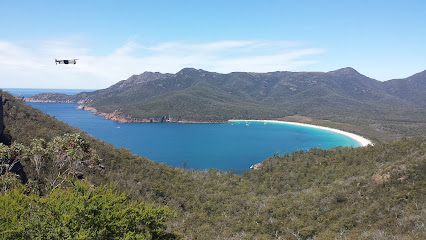
Geographe Restaurant and Espresso Bar
Experience exquisite local cuisine with stunning coastal views at Geographe Restaurant & Espresso Bar in Coles Bay, Tasmania.

Freycinet Lodge
Discover the perfect blend of luxury and wilderness at Freycinet Lodge in Tasmania's breathtaking National Park.

Honeymoon Bay
Discover Honeymoon Bay: A stunning beach retreat nestled in Freycinet National Park with crystal-clear waters and breathtaking scenery.

Melshell Oyster Shack
Discover fresh oysters and stunning coastal views at Melshell Oyster Shack in Dolphin Sands, Tasmania – a seafood lover's paradise.

BIG4 Iluka on Freycinet Holiday Park
Discover nature's wonders at BIG4 Iluka on Freycinet Holiday Park – your gateway to Tasmania's breathtaking landscapes and outdoor adventures.

Ice Creamery & Co.
Discover delectable artisanal ice cream and classic fish & chips at Ice Creamery & Co., your sweet retreat in beautiful Coles Bay.
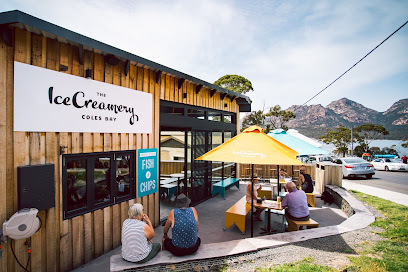
Freycinet Resort
Discover tranquility and adventure at Freycinet Resort in Tasmania's stunning national park.

Iluka Tavern
Discover Iluka Tavern in Coles Bay - A perfect blend of Australian cuisine and breathtaking coastal views await you.

Granite Freycinet
Experience breathtaking views and delectable dishes at Granite Freycinet - your culinary haven in Coles Bay.

Diamond Island Resort, Restaurant & Bar and Penguin Show
Experience breathtaking landscapes and delightful amenities at Diamond Island Resort, Restaurant & Bar in Bicheno, Tasmania.

Saffire Freycinet
Discover unparalleled luxury at Saffire Freycinet, nestled between stunning mountains and serene waters in Tasmania's picturesque landscape.

Markets, malls and hidden boutiques
Freycinet National Park
Explore the breathtaking Freycinet National Park, a natural wonder in Tasmania with stunning landscapes, pristine beaches, and diverse wildlife.

Wineglass Bay Lookout
Experience the stunning vistas of Wineglass Bay Lookout in Tasmania's Freycinet National Park, a must-visit for nature lovers and photographers alike.

Freycinet Lodge
Experience luxury and nature at Freycinet Lodge, your gateway to Tasmania's stunning Freycinet National Park.

Ice Creamery & Co.
Experience the sweet side of Tasmania at Ice Creamery & Co., where homemade ice cream meets breathtaking scenery in Coles Bay.

Artifakt Gallery & Cafe
Discover the perfect blend of art and cuisine at Artifakt Gallery & Cafe in Swansea, Tasmania, where every meal is a masterpiece.

IGA Everyday Bicheno
Explore the vibrant IGA Everyday Bicheno, your go-to supermarket for local produce and unique Japanese groceries in Tasmania.
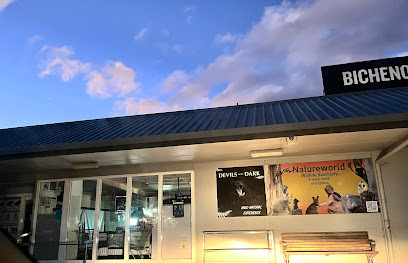
Granite Freycinet
Discover the perfect blend of culinary delight and breathtaking views at Granite Freycinet, your go-to cafe in Coles Bay, Tasmania.
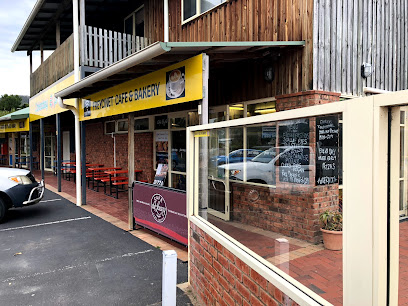
IGA Everyday Swansea
Explore IGA Everyday Swansea, your one-stop supermarket for local produce and unique Japanese groceries in beautiful Tasmania.

Rainy Day: Ice Creamery, Puzzle Store & Laundromat
Experience delightful ice cream, engaging games, and convenient laundry services at Rainy Day in Bicheno, Tasmania.

Log Cabin General Store
Uncover unique local crafts, homewares, and hardware at Bicheno's Log Cabin General Store, a charming gift shop in Tasmania.
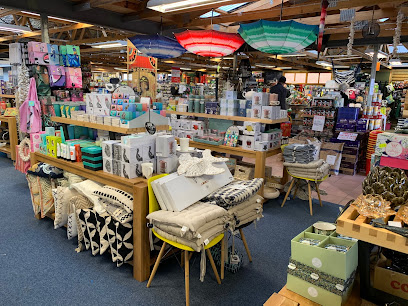
Morris' Store
Experience the essence of Tasmanian hospitality at Morris' Store, Swansea's go-to destination for local produce and unique finds.
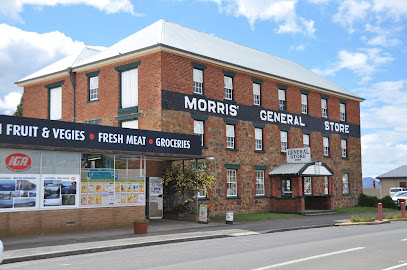
Freycinet National Park Campground
Experience the breathtaking beauty and tranquility of Freycinet National Park Campground in Tasmania, a perfect spot for nature lovers and outdoor enthusiasts.

Coles Bay Convenience - General Store And Post Office
Discover the heart of Coles Bay at this charming convenience store, your source for local goods and warm community vibes in Tasmania.

Swansea Supermarket
Discover the taste of Tasmania at Swansea Supermarket, where local produce meets friendly service in the heart of Swansea.

Clennett's Mitre 10 - Swansea
Explore Clennett's Mitre 10 in Swansea for all your hardware needs, featuring local craftsmanship and expert advice.

Essential bars & hidden hideouts
Freycinet National Park
Explore the stunning landscapes and diverse wildlife of Freycinet National Park, a jewel of Tasmania's east coast, perfect for nature lovers and adventurers.
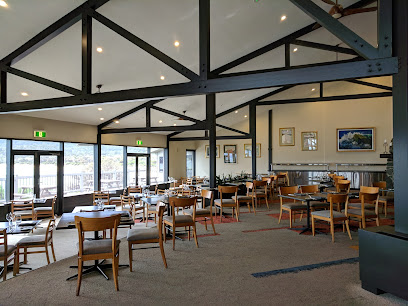
Freycinet Marine Farm
Experience the freshest seafood at Freycinet Marine Farm, featuring local oysters and stunning coastal views in Tasmania.

Wineglass Bay Lookout
Discover the unmatched beauty of Wineglass Bay Lookout, a scenic jewel in Tasmania's Freycinet National Park, offering breathtaking vistas and unforgettable hikes.

Bark Mill Tavern & Bakery
Experience local flavors at Bark Mill Tavern & Bakery in Swansea, Tasmania, where rustic charm meets culinary delights.

Geographe Restaurant and Espresso Bar
Experience exquisite dining at Geographe Restaurant and Espresso Bar, a top culinary destination in beautiful Coles Bay, Tasmania.

Cape Tourville Lighthouse and Lookout
Experience breathtaking views and rich maritime history at Cape Tourville Lighthouse in Freycinet National Park, Tasmania.

Freycinet Lodge
Experience the Beauty of Tasmania at Freycinet Lodge - A Perfect Blend of Nature, Comfort, and Culinary Delight.

Honeymoon Bay
Experience the tranquil beauty of Honeymoon Bay, a stunning Tasmanian gem perfect for relaxation and outdoor adventures amidst breathtaking scenery.

Melshell Oyster Shack
Discover Melshell Oyster Shack in Dolphin Sands - where fresh oysters meet breathtaking coastal views in Tasmania.

Saltshaker Restaurant.
Discover the culinary delights of Saltshaker Restaurant in Swansea, Tasmania, where fresh local ingredients and seafood create unforgettable dining experiences.

BIG4 Iluka on Freycinet Holiday Park
Experience the breathtaking beauty of Tasmania at BIG4 Iluka on Freycinet Holiday Park, your ideal base for adventure and relaxation.

Freycinet Resort
Experience the perfect blend of stunning nature and gourmet dining at Freycinet Resort, Tasmania's culinary gem.

Iluka Tavern
Discover the flavors of Tasmania at Iluka Tavern, a charming bar and restaurant in Coles Bay with stunning views and local cuisine.
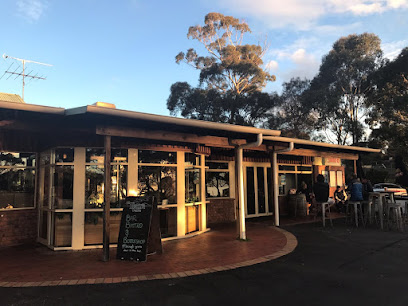
Saffire Freycinet
Experience unparalleled luxury at Saffire Freycinet, a stunning resort hotel on Tasmania's breathtaking Freycinet Peninsula, where nature and comfort meet.

Granite Freycinet
Experience the culinary delights of Granite Freycinet in Coles Bay, where local flavors meet stunning Tasmanian scenery.

Local Phrases about Freycinet National Park
-
- HelloG'day
[g'day] - GoodbyeSee ya
[see ya] - YesYeah
[yeah] - NoNah
[nah] - Please/You're welcomePlease/No worries
[please/no worries] - Thank youCheers
[cheers] - Excuse me/SorrySorry
[sorry] - How are you?How ya goin'?
[how ya goin'] - Fine. And you?Good. How bout you?
[good. how 'bout you?] - Do you speak English?Ya speak English?
[ya speak English?] - I don't understandI'm lost
[I'm lost]
- HelloG'day
-
- I'd like to see the menu, pleaseCan I have a squiz at the menu, mate?
[can I have a squiz at the menu, mate?] - I don't eat meatI'm vego
[I'm vego] - Cheers!Cheers!
[cheers!] - I would like to pay, pleaseCan I settle up, mate?
[can I settle up, mate?]
- I'd like to see the menu, pleaseCan I have a squiz at the menu, mate?
-
- Help!Help!
[help!] - Go away!Get lost!
[get lost!] - Call the Police!Get the cops!
[get the cops!] - Call a doctor!Get a doc!
[get a doc!] - I'm lostI'm lost
[I'm lost] - I'm illI'm crook
[I'm crook]
- Help!Help!
-
- I'd like to buy...I wanna grab...
[I wanna grab...] - I'm just lookingJust havin' a squiz
[just havin' a squiz] - How much is it?How much for that?
[how much for that?] - That's too expensiveThat's a bit steep, mate
[that's a bit steep, mate] - Can you lower the price?Any chance of a better price?
[any chance of a better price?]
- I'd like to buy...I wanna grab...
-
- What time is it?What's the time?
[what's the time?] - It's one o'clockIt's one
[it's one] - Half past (10)Half ten
[half ten] - MorningMornin'
[mornin'] - AfternoonArvo
[arvo] - EveningEvenin'
[evenin'] - YesterdayYesty
[yesty] - TodayToday
[today] - TomorrowTomorra
[tomorra] - 1One
[one] - 2Two
[two] - 3Three
[three] - 4Four
[four] - 5Five
[five] - 6Six
[six] - 7Seven
[seven] - 8Eight
[eight] - 9Nine
[nine] - 10Ten
[ten]
- What time is it?What's the time?
-
- Where's a/the...?Where's the...?
[where's the...?] - What's the address?What's the addy?
[what's the addy?] - Can you show me (on the map)?Can you point it out?
[can you point it out?] - When's the next (bus)?When's the next bus?
[when's the next bus?] - A ticket (to ....)A ticket to ...
[a ticket to ...]
- Where's a/the...?Where's the...?
History of Freycinet National Park
-
Freycinet National Park is part of the traditional lands of the Oyster Bay Tribe, also known as the Paredarerme people. Their connection to the land dates back thousands of years, and the area was a rich source of food and materials for their daily lives. Evidence of their presence can be found in the form of shell middens, stone artifacts, and rock shelters. The Paredarerme people held a deep spiritual connection to the land, and various sites within the park are considered culturally significant.
-
The first recorded European sighting of the Freycinet Peninsula was by the Dutch explorer Abel Tasman in 1642, who named the island 'Van Diemen's Land' after the Governor-General of the Dutch East Indies. However, it was the French expedition led by Nicolas Baudin in 1802 that mapped the area in detail. The peninsula was named after the brothers Louis and Henri de Freycinet, both of whom were officers on Baudin's expedition.
-
During the early 19th century, the Freycinet Peninsula became a hub for whaling and sealing. European settlers established temporary camps along the coastline, taking advantage of the abundant marine life. This period saw significant environmental impact due to over-exploitation of resources, but it also led to increased European presence and exploration in the region.
-
In the late 19th and early 20th centuries, the discovery of tin and coal deposits led to a mining boom in the area. Small mining communities sprang up, and the industry contributed to the local economy. However, the mining operations were short-lived, and many of the settlements were abandoned by the mid-20th century. Today, remnants of mining infrastructure can still be found within the park.
-
Freycinet National Park was officially established in 1916, making it one of the oldest national parks in Australia. The park was created to protect its unique landscapes, flora, and fauna, as well as its cultural heritage. Over the years, the boundaries of the park have been expanded to include more of the surrounding natural areas. Efforts have been made to restore and preserve the park's ecosystems, ensuring its beauty and biodiversity for future generations.
-
In recent decades, Freycinet National Park has become a focal point for conservation and eco-tourism. Various programs have been implemented to protect endangered species and restore habitats. The park's management works closely with Indigenous communities to preserve cultural sites and promote sustainable tourism practices. Visitors are encouraged to respect the natural environment and learn about the park's rich history and cultural significance.
Freycinet National Park Essentials
-
Freycinet National Park is located on the east coast of Tasmania, Australia. The nearest major city is Hobart, approximately 2.5 hours' drive away. You can fly into Hobart International Airport and rent a car for the scenic drive to the park. Alternatively, Launceston Airport is another option, approximately 2 hours' drive from the park. Public transport options are limited, so renting a car is recommended for convenience.
-
Within Freycinet National Park, the best way to get around is by car. This allows you to explore the various attractions at your own pace. There are also shuttle buses that operate within the park, providing transportation to popular trailheads and lookout points. Bicycles can be rented for exploring the area, and there are designated cycling paths. Walking is also a great way to experience the park’s natural beauty, with many well-marked trails available.
-
The official currency in Australia is the Australian Dollar (AUD). Credit and debit cards are widely accepted in most facilities, including hotels, restaurants, and shops around Freycinet National Park. ATMs are available in nearby towns such as Coles Bay, so it's advisable to carry some cash for smaller establishments or instances where card payments may not be accepted.
-
Freycinet National Park is generally a safe destination for tourists. However, standard safety precautions should be taken. Always stay on marked trails to avoid getting lost, and carry plenty of water and sun protection. Wildlife, including snakes, can be encountered, so be cautious and do not approach or feed animals. There are no specific high-crime areas targeting tourists, but always be mindful of your belongings and avoid leaving valuables in your car.
-
In case of an emergency, dial 000 for police, fire, or medical assistance. The nearest medical facilities are located in the town of Bicheno, approximately 30 minutes' drive from the park. It is recommended to have travel insurance that covers medical emergencies. Basic first aid supplies can be found at the visitor center in Freycinet National Park. For minor health issues, the nearby town of Coles Bay has a pharmacy where you can purchase over-the-counter medications.
-
Fashion: Do wear comfortable, weather-appropriate clothing and sturdy hiking boots. Avoid wearing flip-flops or open-toed shoes on trails. Religion: There are no specific religious customs to follow in the park, but always be respectful of any cultural or historical sites. Public Transport: Do use the shuttle services where available and be courteous to other passengers. Don’t expect extensive public transport options within the park. Greetings: Do greet fellow hikers and park staff with a friendly 'hello.' Eating & Drinking: Do carry your own water and snacks, and always take your rubbish with you. Don’t feed the wildlife as it can harm them and disrupt their natural behaviors.
-
To experience Freycinet National Park like a local, start your day early to catch the sunrise at Wineglass Bay. Visit the local markets in Coles Bay for fresh produce and Tasmanian specialties. Engage with park rangers at the visitor center for insider tips on the best trails and hidden spots. Don’t miss the opportunity to join a guided tour or eco-cruise to learn more about the park's unique flora and fauna. For a unique experience, try kayaking in the clear waters of Great Oyster Bay or take a scenic flight for a bird’s-eye view of the stunning coastline.
Trending Landmarks in Freycinet National Park
-
Bicheno Blowhole
-
Freycinet Marine Farm
-
Wineglass Bay Lookout
-
Cape Tourville Lighthouse and Lookout
-
Freycinet Lodge
-
Honeymoon Bay
-
Freycinet National Park Visitor Centre
-
BIG4 Iluka on Freycinet Holiday Park
-
Freycinet Resort
-
Spiky Bridge
-
Wineglass Bay Cruises
-
Wineglass Bay Beach
-
Coles Bay Conservation Area
-
Painted Cliffs
-
ALL4 // All Terrain Tours
Nearby Cities to Freycinet National Park
-
Things To Do in Melbourne
-
Things To Do in Canberra
-
Things To Do in Sydney
-
Things To Do in Adelaide
-
Things To Do in Kangaroo Island
-
Things To Do in Byron Bay
-
Things To Do in Gold Coast
-
Things To Do in Surfers Paradise
-
Things To Do in Invercargill
-
Things To Do in Queenstown
-
Things To Do in Brisbane
-
Things To Do in Wanaka
-
Things To Do in Noosa
-
Things To Do in Dunedin
-
Things To Do in Timaru









